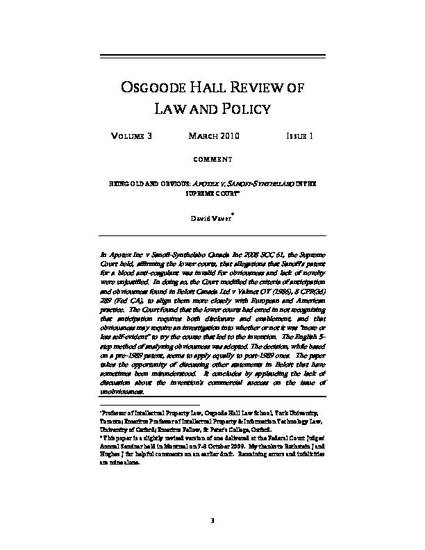
In Apotex Inc v Sanofi-Synthelabo Canada Inc 2008 SCC 61, the Supreme Court held, affirming the lower courts, that allegations that Sanofi‟s patent for a blood anti-coagulant was invalid for obviousness and lack of novelty were unjustified. In doing so, the Court modified the criteria of anticipation and obviousness found in Beloit Canada Ltd v Valmet OY (1986), 8 CPR(3d) 289 (Fed CA), to align them more closely with European and American practice. The Court found that the lower courts had erred in not recognizing that anticipation requires both disclosure and enablement, and that obviousness may require an investigation into whether or not it was “more or less self-evident” to try the course that led to the invention. The English 5-step method of analyzing obviousness was adopted. The decision, while based on a pre-1989 patent, seems to apply equally to post-1989 ones. The paper takes the opportunity of discussing other statements in Beloit that have sometimes been misunderstood. It concludes by applauding the lack of discussion about the invention’s commercial success on the issue of unobviousness.
Available at: http://works.bepress.com/david_vaver/49/
